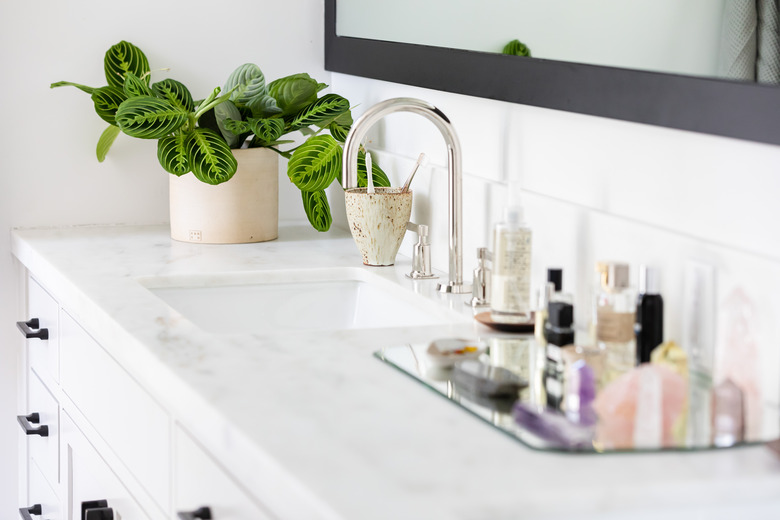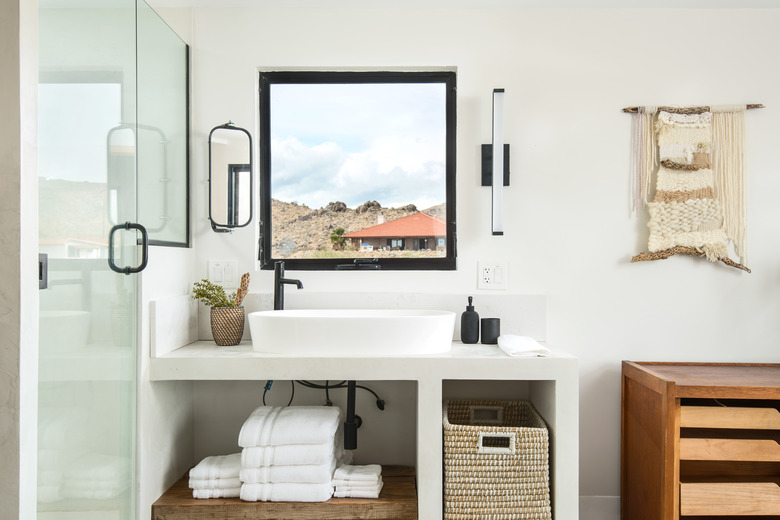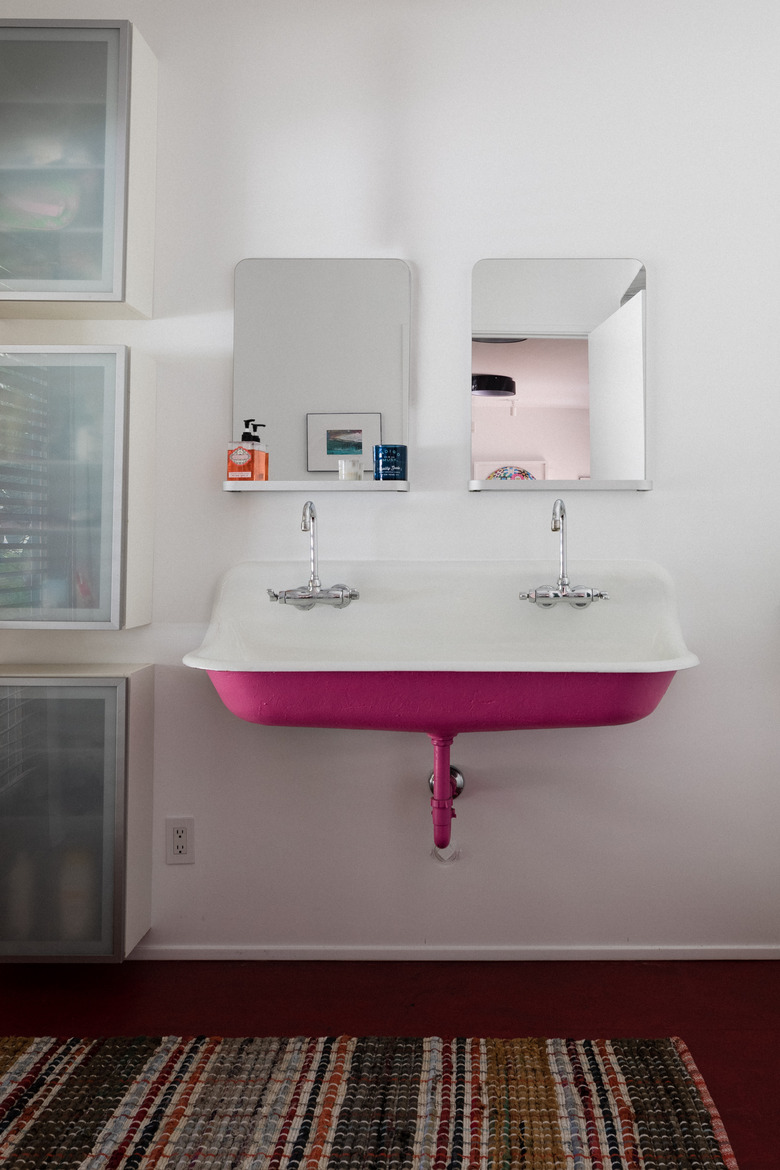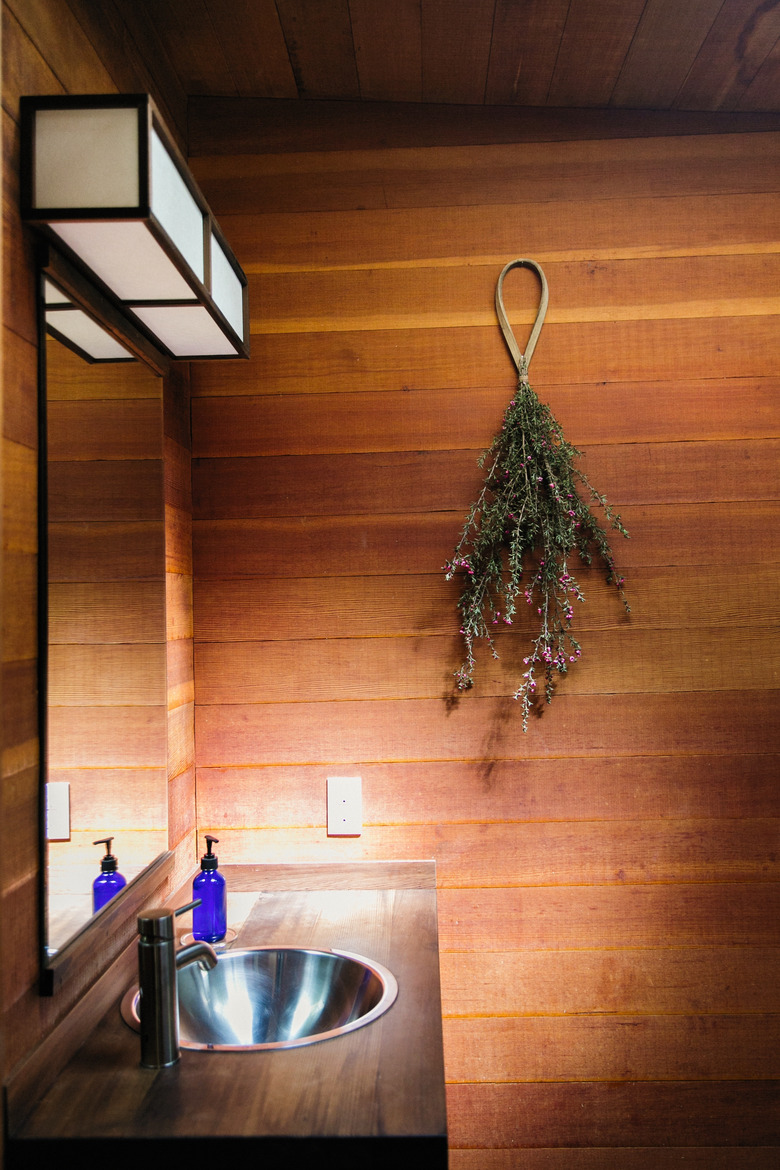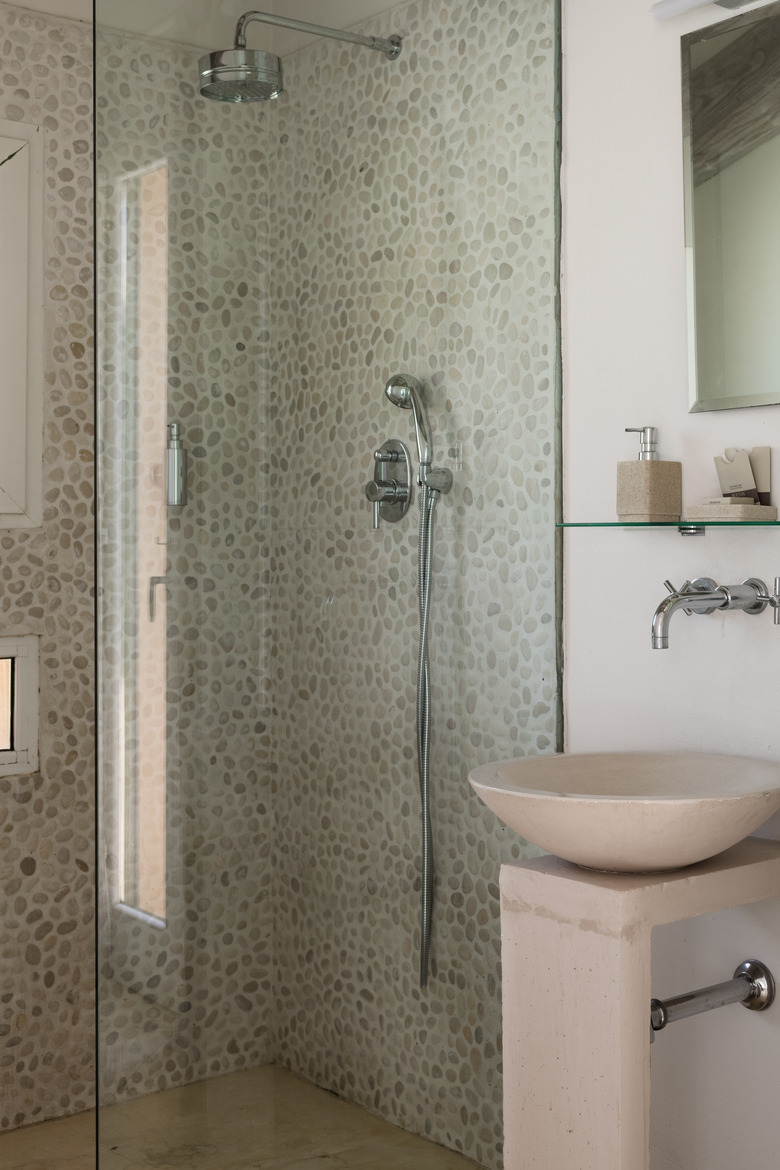Best Materials For Bathroom Sinks
- Cost considerations for bathroom sinks
- Vitreous china bathroom sinks
- Porcelain bathroom sinks
- Enameled cast iron bathroom sinks
- Enameled steel bathroom sinks
- Acrylic bathroom sinks
- Stainless steel bathroom sinks
- Solid-surface bathroom sinks
- Composite bathroom sinks
- Quartz bathroom sinks
- Other bathroom sink materials
Any ranking of the best materials for a bathroom sink is fraught with subjectivity since the choice depends on what characteristics you view as most important. A bathroom sink is a simple fixture, and just about any sink will serve its function adequately and for a long time.
Beyond that, what's most important? Price? Easy maintenance? Appearance? Easy installation? Choosing the best materials depends entirely on your answers to these questions. It is possible, though, to look at a list of the most popular materials for sinks and take note of their pros and cons. Then, you can pick the best material based on your needs.
Cost Considerations for Bathroom Sinks
Cost Considerations for Bathroom Sinks
Surprisingly, the type of material doesn't always make a huge difference when it comes to the cost of a bathroom sink since sinks come in a large range of prices for each material. For the most common sink materials, you will likely find that prices can range from less than $100 upward to $1,000 or even more. How can this be? A lot of it has to do with designer styles and sometimes brand-name reputation. The best strategy is to simply buy the least expensive sink that appeals to you visually.
Vitreous China Bathroom Sinks
Vitreous China Bathroom Sinks
Many sources — including Kitchen Bath Trends, an industry publication devoted to professional designers — conclude that vitreous china and porcelain are the most popular of all bathroom sink materials. These materials provide the best combination of performance and affordability. Ceramic sinks are very strong for their cost, and the smooth, glassy surfaces are easy to clean and very sanitary.
The terms "vitreous china" and "porcelain" are often used interchangeably, and many people do not recognize that these are actually different materials. Vitreous china is a coating that is glazed onto any clay-based ceramic fixture. The word "vitreous" means "glass-like," and it refers to the glassy shine the coating produces when it is used to glaze a ceramic fixture.
For many years, bathroom sinks made of vitreous china have been the most popular sinks installed in the United States. Most of the basic white sinks you see are vitreous china, although this material is also found in more colorful forms. Vitreous china is a stone-like material with a shiny surface, created when glass is superheated to form a liquid that is then used to coat ceramic.
Bathroom sinks made of vitreous china start at about $75 for basic drop-in sinks and can run well over $750 for console sinks with sculpted legs. Vitreous china can be used for pretty much any sink style, including drop-in, undermount, vessel, farmhouse and console sinks. Installation requires some care to avoid cracking the ceramic body of the fixture or chipping the glazing but is otherwise uncomplicated.
Porcelain Bathroom Sinks
Porcelain Bathroom Sinks
Although similar to vitreous china, porcelain is a solid form of ceramic with no glazed coating on it. It is the same material often used to coat cast iron or stainless steel. When used to form a solid sink, porcelain has a slightly translucent quality that is different than the hard shine seen in vitreous china.
Solid porcelain is a very hard substance, and these sinks are quite durable. Solid porcelain can be chipped, but when chips do occur, you won't see a different substance inside the chip as you do with vitreous china. Porcelain is a form of solid ceramic, so it is possible to crack it, though this kind of misuse is rare in bathrooms. Porcelain surfaces can be stained, so spills of fingernail polish and other discoloring agents should be removed immediately.
Porcelain bathroom sinks purchased at home improvement centers start at about $100 and can run to several hundred dollars. Most of these sinks are white, but you can find colored porcelain at specialty design stores that can approach $1,000.
Full-bodied porcelain sinks are quite heavy and are best installed as drop-in models. Undermount styles are also available, but suspending such a heavy sink from the underside of a countertop can be tricky. Many vessel sinks are also made from porcelain, which has many of the advantages of designer glass but is much stronger.
Enameled Cast Iron Bathroom Sinks
Enameled Cast Iron Bathroom Sinks
Cast iron sinks are formed with molded solid cast iron coated with a layer of porcelain enamel on the inside surface. The rougher cast iron outer surface is usually painted black, which will be visible around the bottom of the sink basin.
The heavy metal makes these sinks quite durable, and the enameled surface is surprisingly strong. Enameled cast iron sinks for bathrooms come in a wide range of prices, beginning at about $50 at the low end and running many hundreds of dollars at the high end. Most homeowners find a good range of options in the $100 to $200 range.
Because of the heavy weight, these sinks are most often installed as drop-in, self-rimming models that can rest their entire weight on the surrounding countertop. Cast iron is also often used for farmhouse-style sinks. There are some undermount models, but installation can be difficult due to the heavy weight.
Enameled Steel Bathroom Sinks
Enameled Steel Bathroom Sinks
These sinks are similar to cast iron, but rather than a heavy metal shell, these use a lighter grade of steel as the base for a porcelain enamel coating. Enameled steel gives you the look of a cast iron sink without the heavy weight and high cost. These sinks can be purchased for as little as $40, but they are sometimes a bit flimsy, and the enamel can sometimes chip and crack. Hot water in a steel sink will lose heat much quicker than it does in an enameled cast iron sink.
Enameled steel is most commonly used in drop-in and undermount sink styles. Its light weight makes it especially good for undermount applications.
Acrylic Bathroom Sinks
Acrylic Bathroom Sinks
Molded acrylic plastic — the same material used to make all-in-one bathtub shower shells or molded shower pans — is also used to make bathroom sinks. They are quite popular in Europe and are steadily making inroads in U.S markets. These sinks are sometimes molded right into countertops, and there are also drop-in styles available.
Acrylic sinks are lightweight and strong since they are reinforced with fiberglass fibers. This is a relatively soft material that can be easily scratched, so never use abrasive cleansers on an acrylic sink. These are very good sinks for DIYers since they are light and easy to install. Prices start at around $200, but don't expect this sink to have the longevity of a ceramic sink.
Stainless Steel Bathroom Sinks
Stainless Steel Bathroom Sinks
Uncoated stainless steel, long popular in kitchens, is also finding increasing use for bathroom sinks. These sinks are manufactured by drawing a sheet of hot steel down over a die mold to shape the basins. The color of these sinks is brightly metallic, and they come in either shiny or brushed finishes.
Stainless steel sinks are extremely durable and sanitary and have a modern look in a bathroom setting. Over time, though, they can develop scratches, and the metal is hard to keep clean. The look will not match every bathroom style.
Prices for stainless steel bathroom sinks start at around $100 and can run to $800 or so. They are a favorite for undermount applications thanks to their light weight, but they can be found in every sink style, including vessel sinks. They are relatively easy to install.
Solid-Surface Bathroom Sinks
Solid-Surface Bathroom Sinks
Solid surface is a man-made composite material made from a blend of polyester or acrylic resins combined with a natural bauxite powder. The material is most popular for countertops, but it can also be shaped into sink or tub basins. There is a huge range of colors and styles available, and these sinks can be joined with invisible seams to a solid-surface countertop, giving the appearance of a completely integral sink/countertop unit.
Solid-surface sinks are available in solid colors or in blends that closely resemble granite or other natural stone. While these sinks are not as hard as natural stone or engineered stone sinks, scratches are fairly easy to sand and polish with fine-grit sandpaper.
Solid-surface sinks come in all styles, including undermount, drop-in and vessel sinks. A very popular option is an integrated sink/countertop, where an undermounted sink is preattached to a matching solid-surface countertop. Prices for solid-surface sinks usually run from $150 to $500. These integrated sinks/countertops are generally rather easy to install, though the heavy weight makes it advisable to have a helper.
Composite Bathroom Sinks
Composite Bathroom Sinks
Another popular material used for bathroom sinks is made from a blend of acrylic resins and real pulverized mineral stone. This is a more modern variation on the old cultured marble, which was made from finely ground limestone and man-made resins.
The composite material used on sinks is typically comprised of pulverized granite powder mixed with acrylic resins; these are often known as composite granite or composite sinks. Composite sinks are very attractive, but the material is somewhat porous and can be easily stained and scratched. You should not use abrasive cleansers on composite sinks.
Composite granite sinks are often sold as part of integral sink/countertop units in which the sink basin is bonded beneath an engineered stone countertop. Composite granite sinks are also sold as drop-in, undermount or vessel sinks. Prices typically start at about $250 and run upward to $500 or more. These are very heavy sinks, so DIYers will need a helper or two to move and install them.
Quartz Bathroom Sinks
Quartz Bathroom Sinks
Another form of modern engineered stone commonly used for countertops and sinks is often known as quartz since a large percentage of the stone used in the composite is quartzite. These sinks are second only to solid natural stone for cost — prices start at about $800 and run to $1,200 or more.
This is a very durable sink material, and it's nearly impervious to stains and less prone to cracking than solid stone. Quartz sinks are normally sold preattached to quartz countertops as integral sink/countertop units. While installation is simply a matter of setting the countertop onto the vanity, these are heavy units that require two or more people to install.
Other Bathroom Sink Materials
Other Bathroom Sink Materials
Although they are well down the list of most popular materials, there are several other materials worth considering if you are looking for something more unique.
- Glass: Ornamental glass is used for highly decorative vessel sinks that sit elevated on a vanity countertop. These vessel sinks often use dramatic art-quality glass, and there is a decided "wow" factor to featuring one in your bathroom. This is not a family friendly material — its only real virtue is its decor statement. Glass vessel sinks can be very expensive, and they are by nature brittle and subject to breaking.
- Natural stone: Another material at the top end of the sink market is solid natural stone, such as soapstone, onyx, granite or marble. These are generally vessel sinks that rest elevated on a stone or engineered stone countertop. There are also natural stone vessel sinks that are partly recessed into the vanity countertop. Prices begin at about $300 but can easily exceed $1,000.
- Copper: Another unique material for a bathroom sink is hammered copper. It is most commonly used in vessel sinks, but drop-in and undermount styles are also available. These beautiful sinks are resistant to corrosion and are quite easy to clean. Copper is a soft metal, however, and it can be subject to denting. Prices start at a surprisingly low $100 or so at home centers but can run much higher for unique bowl shapes and sizes from designer galleries. Like most vessel sinks, they are fairly easy to install.
- Concrete: Poured concrete is increasingly popular as a countertop trend, and it is now featured in some trough and vessel bathroom sinks. Traditionally, concrete sinks have been fabricated to order, but you can now find concrete vessel sinks sold at home improvement centers with prices that start at about $350. A concrete sink fits best in a modern, industrial room design. These are quite heavy sinks, and even a modest-sized vessel sink may need a helper to install.
- Fireclay: These sinks are made from a special clay that is glazed and fired to create a heavy-duty sink with a surface that resembles enamel. These are expensive sinks that start at about $450, and caring for them is somewhat difficult. They are prone to staining and wear if they are not properly maintained, but they can be a good choice for modern decor bathrooms.
References
- Kitchen Fittings Direct: What Are Composite Sinks? The Complete Guide
- Badeloft Luxury Bathrooms: Common Sink Materials: Pros and Cons
- Home Depot: Types of Bathroom Sinks
- Trade Winds Imports: Vitreous China vs. Porcelain: What's the Difference?
- HomeAdvisor: How Much Does A Sink Installation Cost?
- Stoneteco: Pros and Cons of Solid Surface Sinks
- Signature Hardware: Bathroom Sink Material Buying Guide
- The Toilet Zone: Bathroom Sink Material Buying Guide (Porcelain, Ceramic, Stainless & More)
- Kitchen Bath Trends: Vitreous China and Porcelain: What's the Difference
